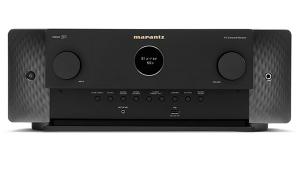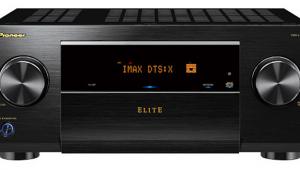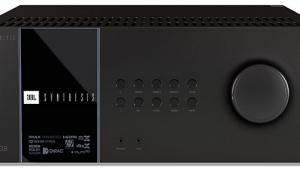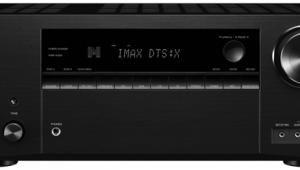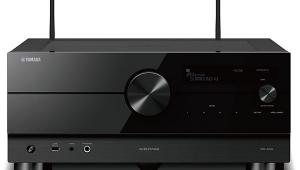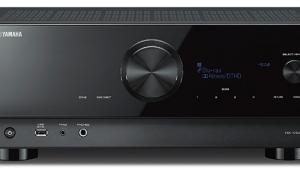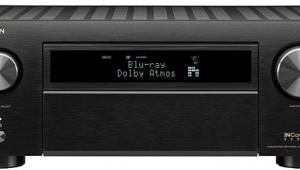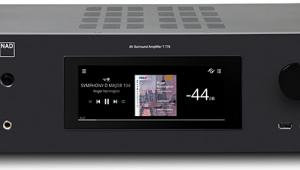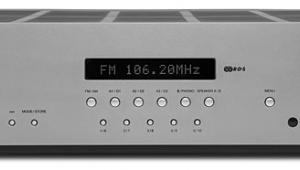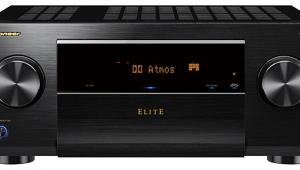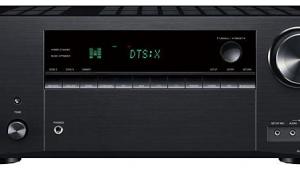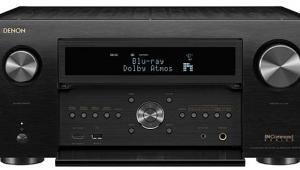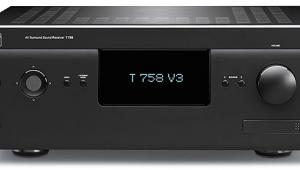Yamaha Aventage RX-A3060 A/V Receiver Review Test Bench
Two channels driven continuously into 8-ohm loads:
0.1% distortion at 159.0 watts
1% distortion at 186.4 watts
Five channels driven continuously into 8-ohm loads:
0.1% distortion at 102.3 watts
1% distortion at 127.1 watts
Seven channels driven continuously into 8-ohm loads:
0.1% distortion at 52.2 watts
1% distortion at 53.6 watts
Analog frequency response in Pure Direct mode:
–0.05 dB at 10 Hz
–0.02 dB at 20 Hz
+0.04 dB at 20 kHz
–2.73 dB at 50 kHz
Analog frequency response with signal processing:
–0.56 dB at 10 Hz
–0.17 dB at 20 Hz
–0.49 dB at 20 kHz
–23.87 dB at 50 kHz
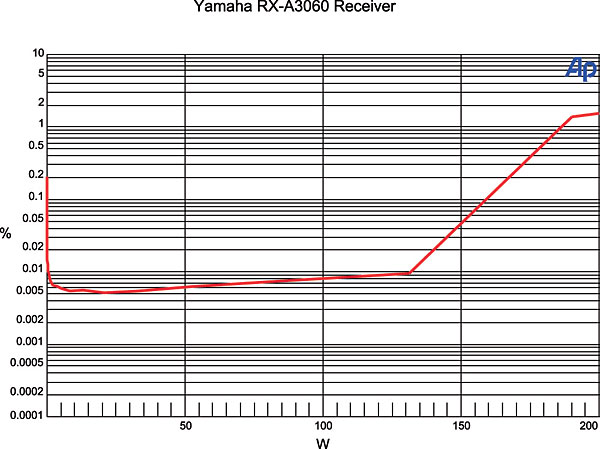
This graph shows that the RX-A3060’s left channel, from A1 input to speaker output with two channels driving 8-ohm loads, reaches 0.1% distortion at 159.0 watts and 1% distortion at 186.4 watts. Into 4 ohms, the amplifier reaches 0.1% distortion at 228.7 watts and 1% distortion at 294.3 watts.
There was no multichannel input to measure. THD+N from the A1 input to the speaker output was less than 0.008% at 1 kHz when driving 2.83 volts into an 8-ohm load. Crosstalk at 1 kHz driving 2.83 volts into an 8-ohm load was –79.34 dB left to right and –79.41 dB right to left. The signal-to-noise ratio with an 8-ohm load from 10 Hz to 24 kHz with “A” weighting was –106.84 dBrA.
From the Dolby Digital input to the loudspeaker output, the left channel measures –0.02 dB at 20 Hz and –0.39 dB at 20 kHz. The center channel measures –0.01 dB at 20 Hz and –0.36 dB at 20 kHz, and the left surround channel measures –0.02 dB at 20 Hz and –0.39 dB at 20 kHz. From the Dolby Digital input to the line-level output, the LFE channel is +0.12 dB at 20 Hz when referenced to the level at 40 Hz and reaches the upper 3-dB down point at 96 Hz and the upper 6-dB down point at 116 Hz.—MJP
